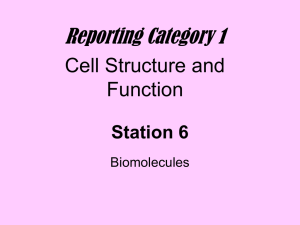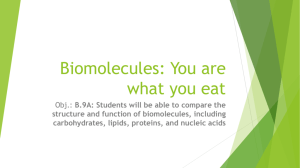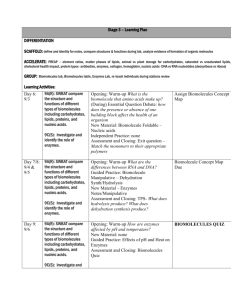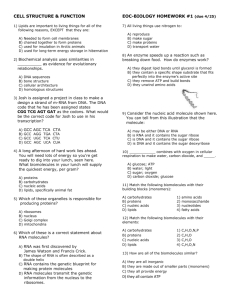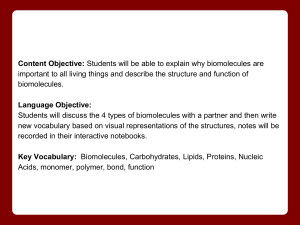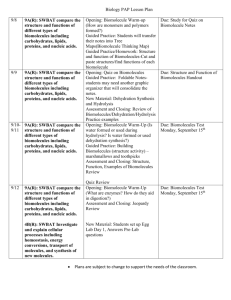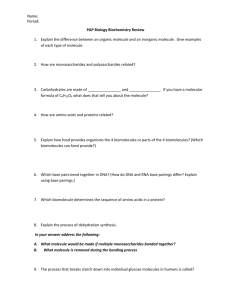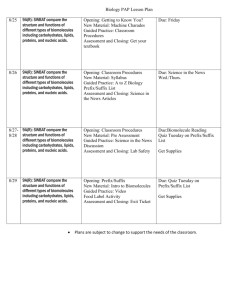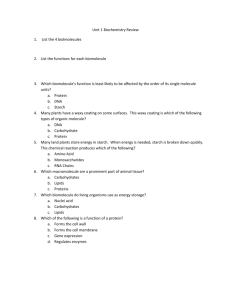Biology 5E 3rd 6wks_Biomolecules
advertisement
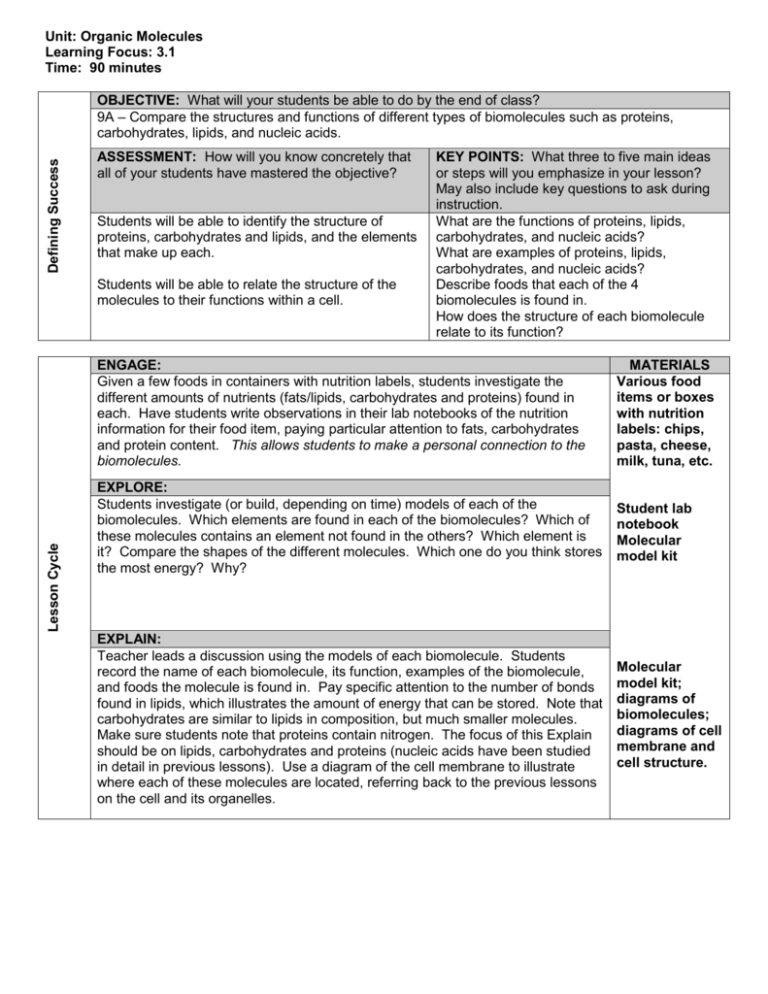
Unit: Organic Molecules Learning Focus: 3.1 Time: 90 minutes Defining Success OBJECTIVE: What will your students be able to do by the end of class? 9A – Compare the structures and functions of different types of biomolecules such as proteins, carbohydrates, lipids, and nucleic acids. ASSESSMENT: How will you know concretely that all of your students have mastered the objective? Students will be able to identify the structure of proteins, carbohydrates and lipids, and the elements that make up each. Lesson Cycle Students will be able to relate the structure of the molecules to their functions within a cell. KEY POINTS: What three to five main ideas or steps will you emphasize in your lesson? May also include key questions to ask during instruction. What are the functions of proteins, lipids, carbohydrates, and nucleic acids? What are examples of proteins, lipids, carbohydrates, and nucleic acids? Describe foods that each of the 4 biomolecules is found in. How does the structure of each biomolecule relate to its function? ENGAGE: Given a few foods in containers with nutrition labels, students investigate the different amounts of nutrients (fats/lipids, carbohydrates and proteins) found in each. Have students write observations in their lab notebooks of the nutrition information for their food item, paying particular attention to fats, carbohydrates and protein content. This allows students to make a personal connection to the biomolecules. MATERIALS Various food items or boxes with nutrition labels: chips, pasta, cheese, milk, tuna, etc. EXPLORE: Students investigate (or build, depending on time) models of each of the biomolecules. Which elements are found in each of the biomolecules? Which of these molecules contains an element not found in the others? Which element is it? Compare the shapes of the different molecules. Which one do you think stores the most energy? Why? Student lab notebook Molecular model kit EXPLAIN: Teacher leads a discussion using the models of each biomolecule. Students record the name of each biomolecule, its function, examples of the biomolecule, and foods the molecule is found in. Pay specific attention to the number of bonds found in lipids, which illustrates the amount of energy that can be stored. Note that carbohydrates are similar to lipids in composition, but much smaller molecules. Make sure students note that proteins contain nitrogen. The focus of this Explain should be on lipids, carbohydrates and proteins (nucleic acids have been studied in detail in previous lessons). Use a diagram of the cell membrane to illustrate where each of these molecules are located, referring back to the previous lessons on the cell and its organelles. Molecular model kit; diagrams of biomolecules; diagrams of cell membrane and cell structure. ELABORATE: Students work in small groups to create a graphic organizer illustrating the characteristics of each biomolecule. For each biomolecule the following information must be included: Structure of the biomolecule Unique characteristics of each biomolecule At least two functions of the biomolecule (one general and one specific to cell function) Locations (at least two) in the cell where the biomolecule is found and its corresponding function How this biomolecule is similar to another of the biomolecules and how it is different (not necessarily to the same biomolecule) EVALUATE: Students work individually to complete the “Understanding Biomolecules” table, without using their notes or posters (unless modifications are needed). Chart paper Markers Notes and textbook or other source information Understanding Biomolecules Sheet
